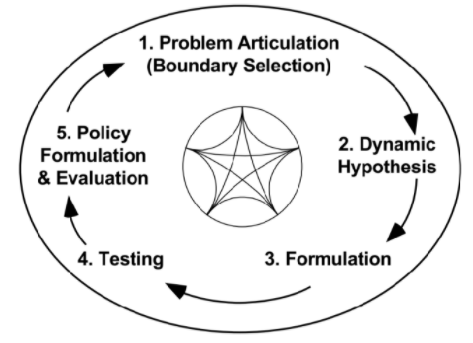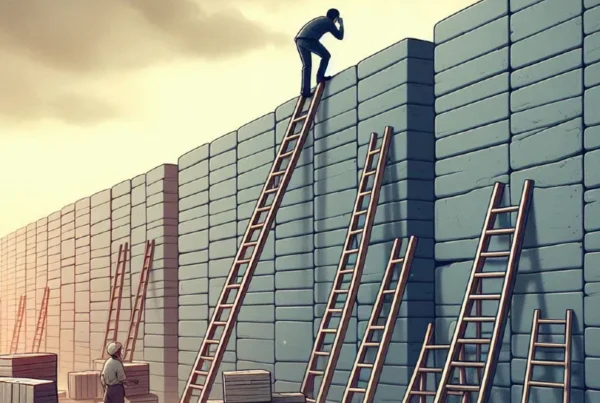Wishing you and your families a prosperous, blessed and safe 2021. I am sure many would prefer to forget about 2020. Whilst 2020 has had a myriad of challenges brought on by Covid-19 and an ailing economy, there is no doubt in my mind that it has also taught us valuable lessons. The question is really, if and how do we take these lessons into 2021.
“Intelligence is the ability to adapt to change” Stephen Hawking
To ensure business success and resilience we must be able to adapt. Some of the questions we should be asking is:
- How do we optimise to ensure survival and growth in sales revenue and profitability?
- How do we ensure we understand what resources are available and how do we use them in the best possible manner?
- How do we ensure business sustainability and continuity?
There are many possible answers, but this article will explain how taking a systems thinking approach will support the above questions.
What is systems thinking?
Let me start by saying that all business environments and business problems that we experience are not the same, hence why would the solution be the same. Most people make the mistake of thinking that if a solution worked in company A, it is simply a matter of cutting and pasting the same solution into company B. Even if a problem looks like it has the same root cause the environment is always different and hence the solution will be different. Therefore, it is safe to say that every problem is unique because the environment within which it sits is different. As an example, many organisations may have a problem with having excessive inventory, but the root cause of this problem could be very different. In company A, the potential cause of the excessive inventory could be over forecasting customer demand resulting in high stock levels. In company B the inventory problem could be due to a decision to have a very high production batch quantity or production run.
Simplistically system dynamics is an approach to understand complex systems and the relationships between cause and effect with the intent of driving holistic system and business improvements.
Systems thinking therefore is a method of helping us to view businesses and different environments from a broad or helicopter viewpoint. This enables the individual to see the overall environment inclusive of the structures, resources, patterns, feedback loops and interrelationships. The opposite of this is when individuals only see specific events or specific parts of the overall system (environment or business) and hence will drive localised versus overall business improvement. A typical approach is illustrated in the diagram below. (source: Sterman, JD, 2000. Business Dynamics: Systems thinking and modelling for a complex world, Boston, Irwin McGraw Hill, Pg 87). Watch out for future articles which will go into more detail

Why use a systems thinking & system dynamics approach?
Whilst there is no silver bullet to solve all of our problems, there are certainly some principles and approaches that can be utilised. One of the approaches is to use a systems thinking approach. As mentioned above this approach is about considering the whole and not isolated parts. Focussing only on a part of the system (sub-department or process) almost always results in the achievement of localised benefits but adds no value to the overall business. This results in a waste of your resources. To use the example of excessive inventory you could make a decision to expand your warehouse when the cause of having excess inventory is linked to a poor customer demand forecast.
As a methodology that looks to model or simulate a complex system (problem within a business) together with an understanding of all feedback loops and cause & effect relationships, the primary benefits are:
- It leads to a better understanding of the problem and the environment (business) within which it resides.
- A better understanding of the root cause specific to your problem. No generic assumptions made.
- It can simulate and test potential solutions.
- It will enable you to focus your resources (people, equipment, money, etc) on those actions and initiatives that will result in you driving sales, profitability and reducing costs.
- Improved customer service.
- Drive efficiency improvements within your business.
- Enable you to make the best use of what you have.
Conclusion
I urge you to increase your knowledge of this field and to engage with individuals skilled in this methodology to aid you in your journey. If you only take away one lesson from this article, I hope that it is the following:
Do not take a cut and paste approach to implementing solutions to your problems. Rather seek to understand that all problems and the environments in which they reside are unique and hence a systems thinking approach will result in you fixing the root cause and ensure you get bottom line benefits versus seeing localized benefits.
The above approach will ensure you make the best use of your hard-earned resources and will lead to you growing your sales revenue, profitability and ensure business sustainability.
Author
Dr Kenneth Moodley is an experienced supply chain and business professional with over 25 years’ experience. As someone who has applied systems dynamics and systems thinking he is well placed to support organisations on their journey. He has a demonstrated history of working with both big corporates (example: Unilever & The South African Breweries) and SMME’s (Productivity SA) in various industry sectors as a senior Supply Chain Specialist, Leader and Business Coach. In addition to his supply chain experience, he is a skilled business turnaround strategist and is a registered senior business rescue practitioner.






Join the discussion One Comment